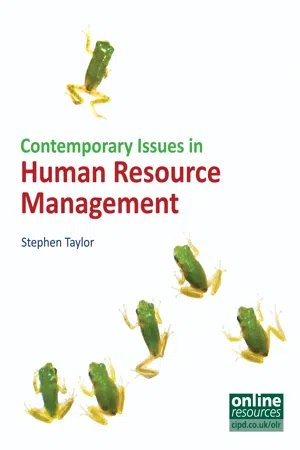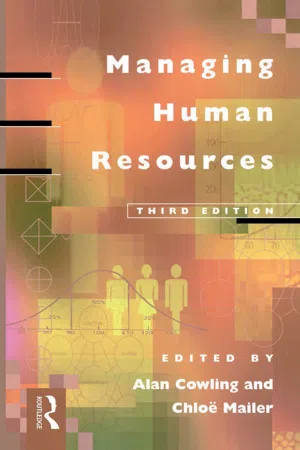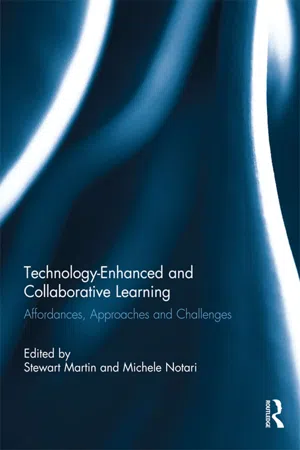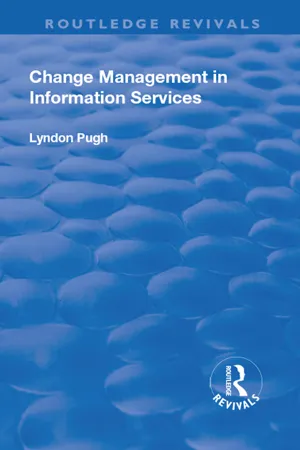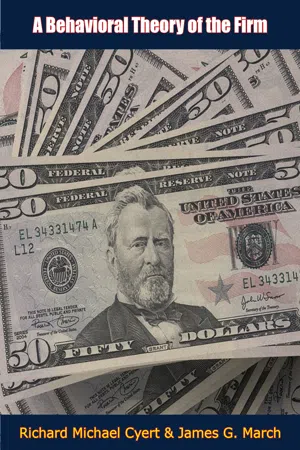Expectancy Theory
Expectancy theory is a motivation theory that suggests people are motivated to act in a certain way based on the expectation of a desired outcome. It emphasizes the importance of individuals believing that their efforts will lead to successful performance and that this performance will be rewarded. The theory highlights the role of expectancy, instrumentality, and valence in driving motivation.
7 Key excerpts on "Expectancy Theory"
- eBook - ePub
- Stephen Taylor(Author)
- 2011(Publication Date)
- CIPD - Kogan Page(Publisher)
...While they are sometimes rather too simplistic simply to follow uncritically in anticipation of positive outcomes, they can and should inform our thinking about practical HR management issues. Expectancy Theory is a good place to start because it deals directly with the question of how best to gain an understanding of individual employee expectations. Expectancy Theory was first developed in the 1960s by the American psychologist Victor Vroom (1964). Since then it has been refined and empirically tested by several others, notably by Porter and Lawler (1968) and most recently by Chiang and Jang (2008). Although it can be made to seem complex and is difficult to test empirically, the basic underlying idea is both straightforward and useful. Vroom expressed his theory in the form of the following formula: motivation to achieve an outcome = expectancy × instrumentality × valence This is a cognitive theory which accepts as its underlying premise the idea that people make rational choices about how much effort they will put in to achieving a task and how much time they will devote to it. Vroom proposed that a lot depends on the extent to which we expect that we will gain some kind of reward as a result of our actions. In his model the term valence concerns the value that the reward has for us. It can be very positive indeed when the reward is something that we desire greatly, much more limited or even negative when the reward that we expect is something that we actively do not desire. Individual preferences will vary greatly here. Some people, for example, are much more motivated by the desire to earn more money than others are. One person may be prepared to put a great deal of effort into a task in order to achieve a relatively modest pay rise, whereas someone else would only put equivalent effort in if the proposed pay rise was much bigger. Negative ratings for valence are possible when the reward that is proposed is something that an individual does not want...
- eBook - ePub
- Alan Cowling, Chloe Mailer, Alan Cowling, Chloe Mailer(Authors)
- 2013(Publication Date)
- Routledge(Publisher)
...The underlying hypothesis is that appropriate levels of effort, and hence productivity, will only be extended if employees’ expectations are fulfilled. It does not assume a static range of expectations common to all employees, but rather points to the possibility of different sets of expectations. Rewards are seen as fulfilling or not fulfilling expectations. The basic model is illustrated in Figure 10.1. Figure 10.1 Expectancy Theory of motivation – applied model This model emphasises that high levels of performance require clarity about work roles, the selection of workers who possess the appropriate aptitudes and abilities, and subsequent training and job knowledge. Research by Porter and Lawler indicates that the value of the reward, particularly pay, and the perception of the effort-reward relationship combine to influence effort in a positive manner. 13 Managers in their sample who perceived their pay to be related to their performance were rated more highly by their superiors than those managers who perceived little relationship. 14 The implications for reward management 15 include the need to: find out what rewards are valued by each employee; clarify what constitutes good performance; ensure that performance targets can be achieved; be clear about the link between rewards and performance; check that alternative expectations are not being fostered in other parts of the organisation; ensure rewards and bonuses are large enough to attract interest; ensure the system is perceived to be fair. Expectancy Theory challenges management to demonstrate to employees that extra effort will reap a commensurate reward. The evidence of research findings and practical experience is that many employees are not convinced that if they exert more effort they will definitely achieve more, and will be rewarded commensurately. Cynicism has been reinforced by, for example, recent performance management schemes offering bonuses of less than 5 per cent in return for extra effort...
- Steven G. Rogelberg(Author)
- 2016(Publication Date)
- SAGE Publications, Inc(Publisher)
...Expectancy Theory of Work Motivation Expectancy Theory of Work Motivation Craig C. Pinder Craig C. Pinder Pinder, Craig C. 467 470 Expectancy Theory of Work Motivation Craig C. Pinder Among the most influential theories of work motivation to appear during the second half of the 20th century in Western psychology and organizational behavior was, in fact, a body of theories that were all variants of an expected-value formulation. In a nutshell, these theories held in common the premise that the motivational force a person would feel toward a particular choice (or position or alternative) was a joint, multiplicative function of the individual’s beliefs about the expected value of the outcomes that the choice alternative would bring about, multiplied by the perceived probability that the outcome would result from selecting that choice (or position, or alternative). These models assume that an individual would form beliefs and perceptions about all (or at least some) of the most salient alternatives available at any choice point and select to act in accordance with the alternative that yields the highest subjective expected utility, or payoff. A few key elements of the model must be emphasized. (We have acknowledged that a variety of Expectancy Theory models are available...
- eBook - ePub
Expectations and Actions
Expectancy-Value Models in Psychology
- Norman T. Feather, Norman T. Feather(Authors)
- 2021(Publication Date)
- Routledge(Publisher)
...Under these conditions expectancy approaches should do fairly well. Predictors of the Theories Components One relatively new area of research within the organizational context has been to investigate the causes of people’s expectancies: that is, to what extent are expectancies caused by specific reward contingencies, personality variables, or group or organizational characteristics? The theory would suggest that reward contingencies would be a major determinant of expectancies and instrumentalities since these variables are defined as effort-performance or performance-outcome relationships. Two studies that actually manipulated reward contingencies and assessed resultant expectancies found support for this proposition (Peters, 1977; Pritchard, DeLeo & Von Bergen, 1976). The Peters study was particularly impressive in that expectancies (the behavior-performance link), instrumentalities (the performance-outcome link), and valences (the value of the outcomes) were all influenced strongly in the predicted direction when performance evaluations, the distribution of rewards, and the desirability of the rewards were manipulated. Also, some work by Kopelman (1976) suggested that people’s expectancies were related to the “reward responsiveness” of the organization. These results provide strong support for the notion that expectancies do indeed reflect the subjects’ perceptions of behavior-outcome relationships. Some personality and organizational variables have also been shown to be related to expectancies. Oldham (1976) found that people with higher self-esteem had higher expectancies, and a number of studies (Lied & Pritchard, 1976; Mitchell, Smyser & Weed, 1975; Sims, Szilagyi & McKemey, 1976) have reported that people with an internal locus of control have higher expectancies than those with an external locus of control...
- eBook - ePub
Technology-Enhanced and Collaborative Learning
Affordances, approaches and challenges
- Stewart Martin, Michele Notari, Stewart Martin, Michele Notari(Authors)
- 2018(Publication Date)
- Routledge(Publisher)
...Their attraction to completing SETs will be very low. Vroom represented this model mathematically as: where V is the attractiveness of a task that could lead to outcome k. V k is the valence of outcome k, and I k is the instrumentality of outcome k. Once the attractiveness is considered, Vroom (1964) asserts that a person’s motivation is affected by one other factor, which he called expectancy. Expectancy is a person’s perception of the probability that effort will lead to a successful performance. In our situation, expectancy is students’ beliefs that, if they put forth effort, they can successfully complete SETs. Factors that could affect expectancy include self-efficacy, goal difficulty, and perceived control over performance (Scholl, 2002). The combination of attractiveness, from the valence model, and expectancy is what Vroom calls the motivational force. Vroom’s force model is represented mathematically as: F = E × V where F is the motivational force, E is the expectancy, and V is the attractiveness of the task. According to Vroom, “Behavior on the part of a person is assumed to be the result of a field of forces each of which has a direction and magnitude” (1964, p. 18). Vroom (1964) states that “people choose from among alternative acts the one corresponding to the strongest positive (or weakest negative) force” (p. 19). Thus, Expectancy Theory asserts that if the motivational force for each alternative action (e.g., completing SETs and not completing SETs) is known, action can be predicted based on the values of the forces. Although Vroom (1964) applied this theory to the area of work motivation, Expectancy Theory itself was developed independent of his field of interest. Expectancy Theory was used in one study (Chen & Hoshower, 2003) to measure the motivational force and attractiveness of various SET outcomes to students...
- eBook - ePub
- Lyndon Pugh(Author)
- 2018(Publication Date)
- Routledge(Publisher)
...Here we have part of the appeal of the modern theories like Learning Organisations and Knowledge Management, where organisations create working conditions that can be internalised in a positive way. There have been examples of both the presence and the absence of this in almost all of the case studies looked at earlier. For example in Case study 1 the University of Porset change programme set out to create a service that mirrored the aspirations, attitudes and capabilities of the staff, while in the County Library Service in Case study 3 there was some friction between the harsh authoritarianism of management and the belief, on the part of at least some of the staff, that they were capable of contributing more to the resolution of the financial problem. In other words there was an enormous gap between their own views of their competence and the managerial attitude to them. The result is invariably frustration, dissatisfaction, cynicism about the direction the service is taking, often boredom and always demotivation. Expectancy Theory In any proposal to introduce something novel, the staff involved will see a natural chain of relationships between the effort expended on the change programme, leading to increased efficiency or improved performance, leading to increased rewards. These rewards could be material, they could be things that appeal to higher order needs or they could present themselves as gains in efficiency. However all this is manifested in individual behaviour, there is a link between the amount of effort to be put into the change, the improvement, whatever it is, that results, and the rewards that follow from this. Whether these are material rewards or less tangible attributes that satisfy individual needs is peripheral...
- eBook - ePub
- Richard Michael Cyert, James G. March(Authors)
- 2020(Publication Date)
- Barakaldo Books(Publisher)
...4 — ORGANIZATIONAL EXPECTATIONS {55} Just as a theory of the firm requires certain assumptions about organizational goals, it also requires certain assumptions about expectations. Since the theory is predicated on the essential purposiveness of the firm, it assumes some attempt on the part of the organization to react to its environment through observation and interpretation. In this chapter we consider the formation and handling of information in a business firm and the ways in which information about the environment enters into the decisions made by a firm. 4.1 Expectations in Theories of Business Decision Making Theories of business decision making generally assume that estimates of cost and return in some form, are made by the firm and that decision behavior depends heavily on such estimates. For example, the standard theory of price treats investment and internal resource allocation as problems in maximization. The firm invests in each available alternative to the extent that the marginal return from each alternative will equal the opportunity costs. Except insofar as sunk costs are involved, the firm makes no fundamental distinction between internal and external investment, that is, all marginal returns are equal to the best alternative return available. Under these conditions, “efficiency”—the ratio of obtained to potential return—is equal to one. What conception of organizational decision making is implicit in such theories? They assume that the organization scans all alternatives continuously and just as continuously adjusts its portfolio of investments to changes in the pattern of alternatives available. They assume that firms have accurate information on the costs to be incurred and returns to be received from alternatives and that decisions are made on the basis of this information...
